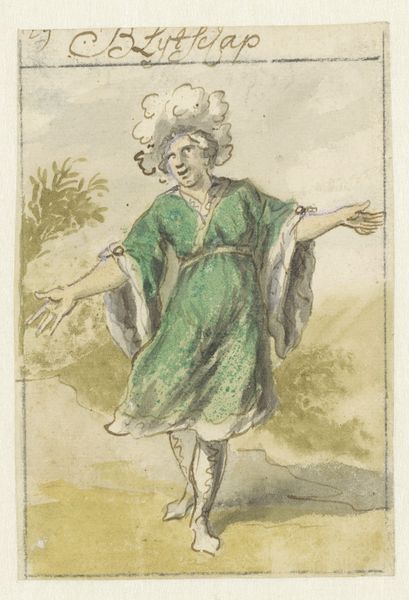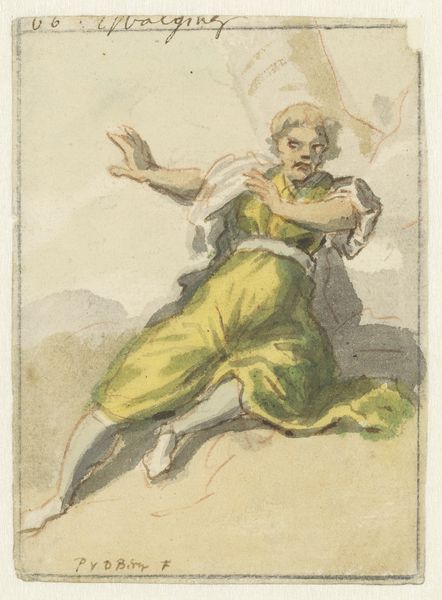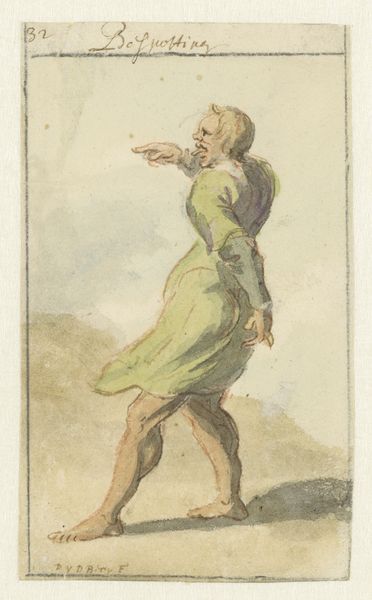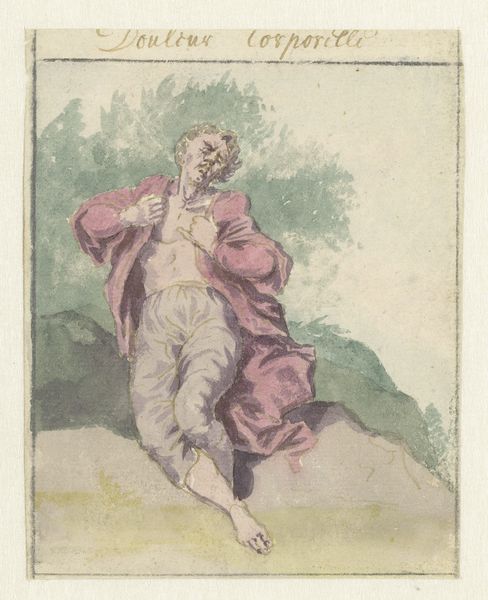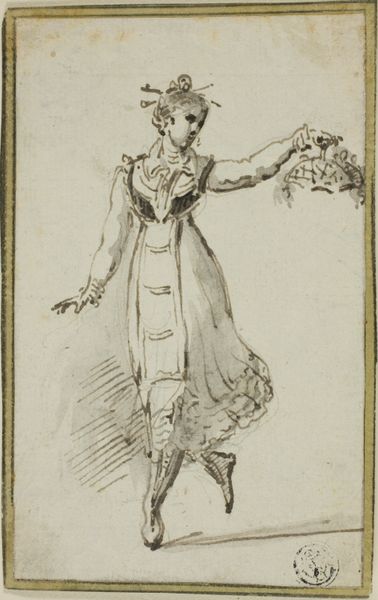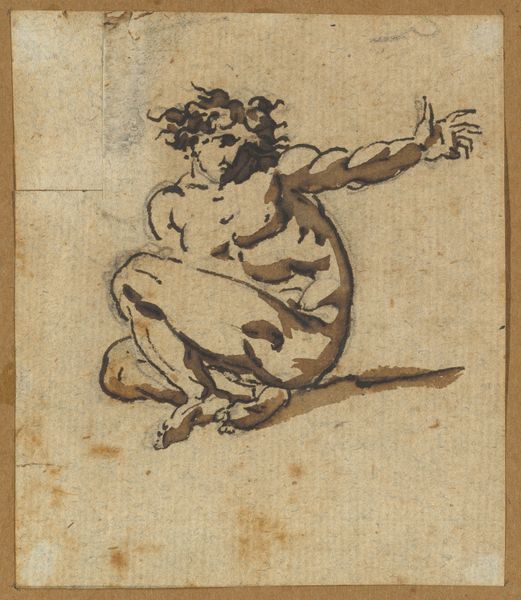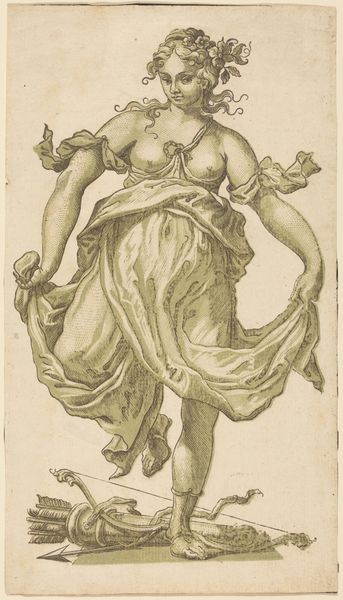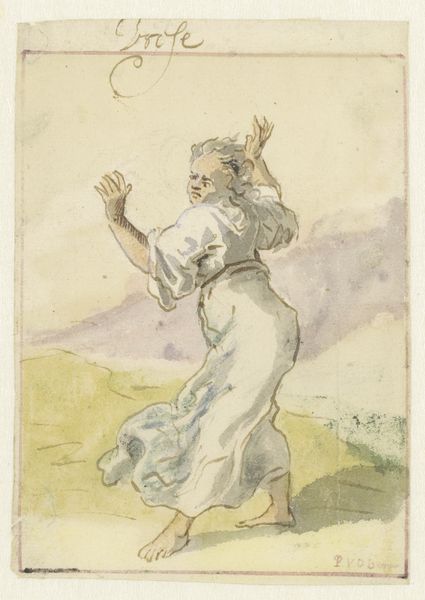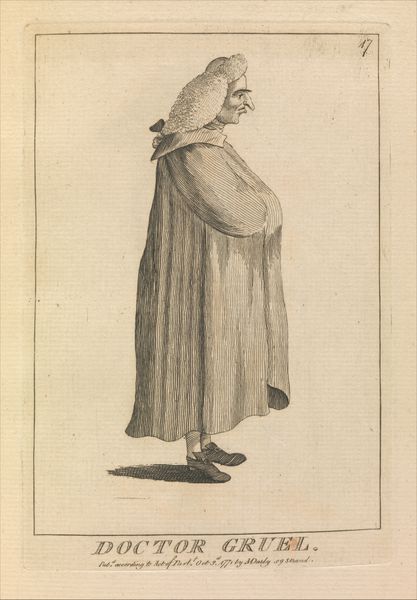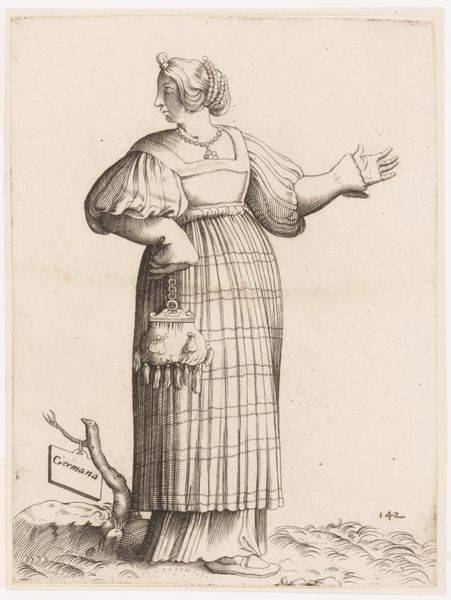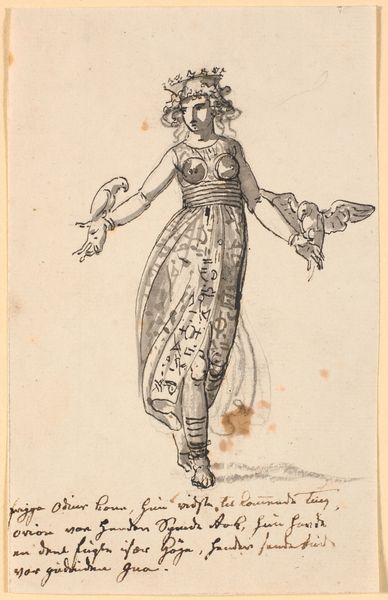
Dimensions: height 138 mm, width 86 mm
Copyright: Rijks Museum: Open Domain
Curator: Well, here we are in front of "Vrolijkheid," an intriguing watercolor and pencil drawing on paper attributed to Pieter van den Berge, dating sometime between 1675 and 1737. What's your first take? Editor: It radiates… unrestrained joy! There’s a childlike abandon in the pose and the sweeping lines of her dress, the raised arms. The slightly muted watercolor palette, though, gives it a touch of melancholy. Curator: Interesting point. This piece comes to us from the Dutch Rococo period. Remember that this style emerged during an era when a merchantile elite, seeking personal refinement and distinction, cultivated genre painting in a way which hadn't been seen before, focusing less on grand narratives of the ruling houses of Europe and more on intimate domesticity and displays of emotion from everyday life. Does it remind you of how Watteau changed the game for painting in France? Editor: Absolutely. In terms of iconography, I am compelled by this idea of capturing an immediate emotional state and the way such displays relate to the theater. This raised arm gesture evokes ancient theatrical gestures representing the emotional body at work. It's an articulation of euphoria, or maybe religious awe? The pose certainly taps into collective memory related to Dionysian rites or bacchantes. Curator: It could well be! Yet here, what I find fascinating is the title itself, “Vrolijkheid” or "Mirth". The Dutch burghers were investing in works which explicitly demonstrated the emotional qualities most important to them. Editor: "Mirth" itself can be seen as a cultural construct! If the Dutch sought to represent it pictorially, perhaps the emotion was less common than the aspirations to be perceived as cheerful. How ironic is it, then, to use art, whose function is to present a version of immortality through enduring images, to showcase fleeting emotions such as joy! Curator: Yes, the Dutch Golden Age cultivated such unique artistic patterns in the Republic. They built an imagined community as they engaged with aesthetic objects en masse! It does make me consider whether this aesthetic also presented a deliberate disavowal of Catholic culture and art which still reigned in Southern Europe. Editor: Well, however you put it, whether religious or political in nature, I think that the universal desire for emotional fulfillment speaks powerfully to viewers even now. Curator: Yes, these nuances regarding Dutch identity and art speak volumes about the importance of this era. Editor: And its ability to conjure very specific feelings is an undeniable part of its cultural significance.
Comments
No comments
Be the first to comment and join the conversation on the ultimate creative platform.
